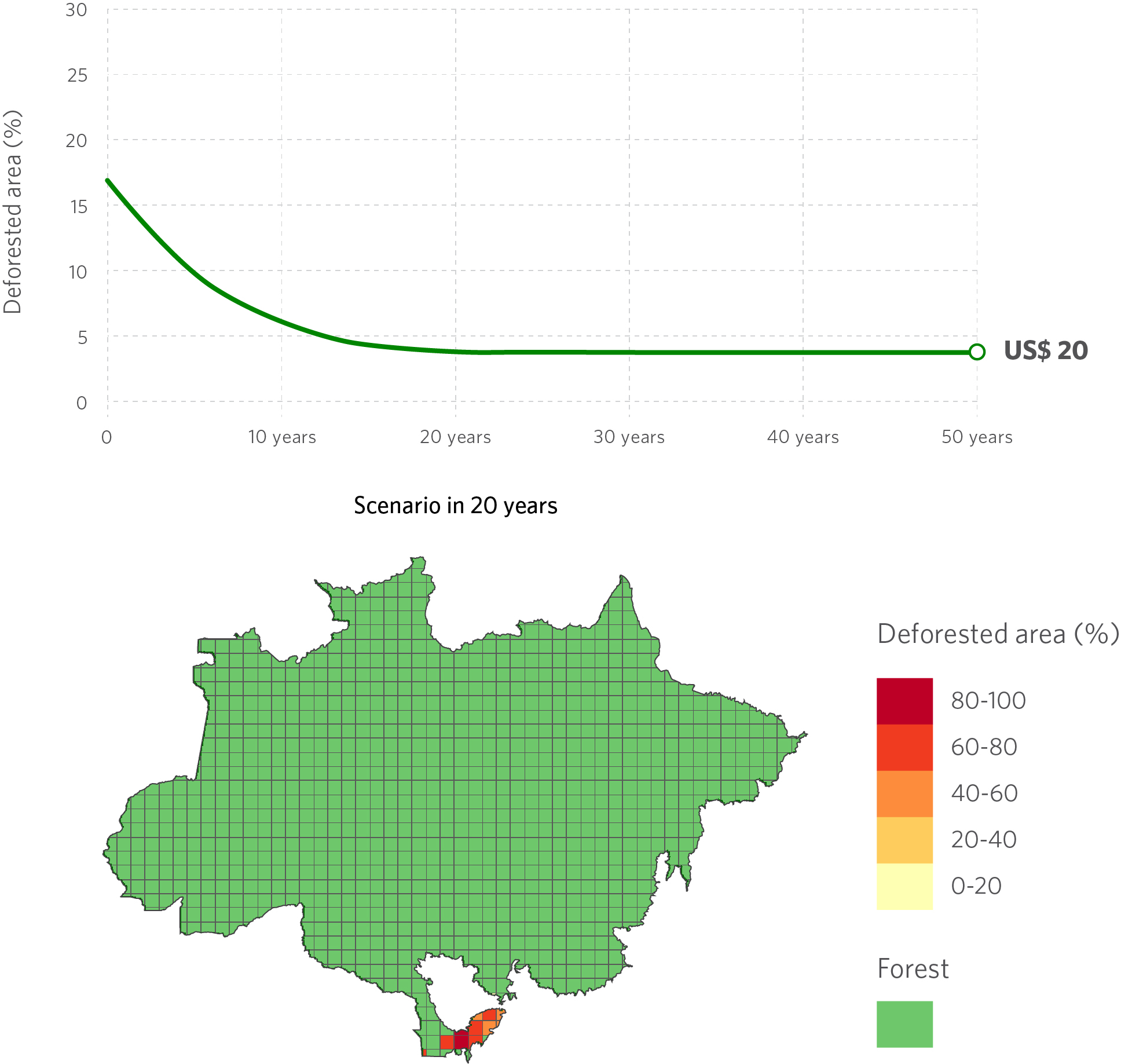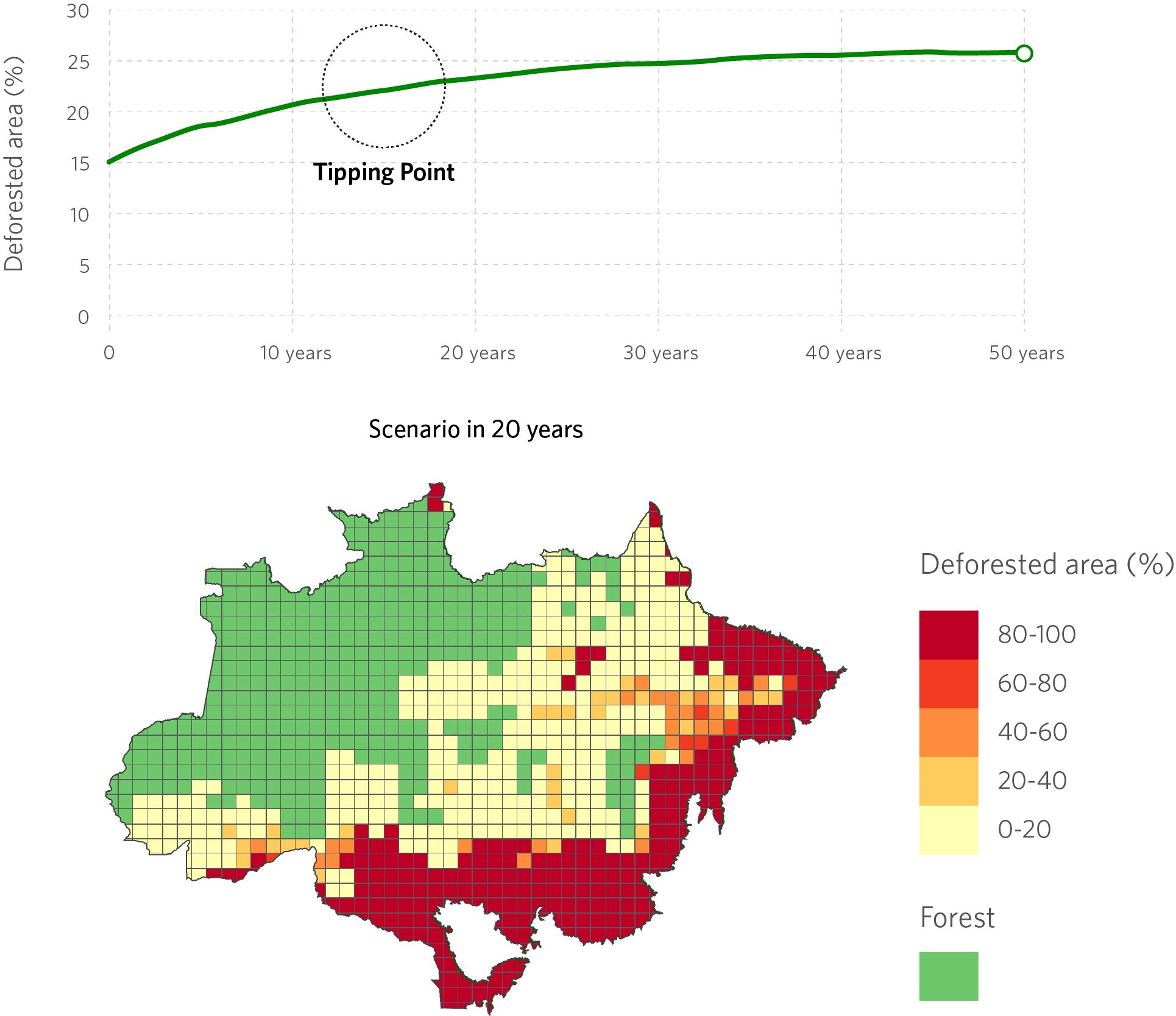Forest carbon is a profitable strategy to fight against climate change.
What would happen to the Amazon if countries paid for its captured CO2? Brazil’s entry into the carbon market with a minimum value of US$ 20 could transform Amazon’s future. This is the result of the unprecedented study released by Climate Policy Initiative/Pontifical Catholic University of Rio de Janeiro (CPI/PUC-RIO) and Amazon 2030 project.
“The reference of US$20 per ton of CO2 captured is a baseline for negotiation, given that EEG emission permits in Europe have been traded at US$90 per ton of CO2. In this study, we are proposing carbon capture, which could be even more valuable.”, says Juliano Assunção, executive director of CPI/PUC-Rio and coordinator of Amazon 2030.
Carbon prices exceeding US$ 20 per ton of CO2 would be transformative for the Amazon. Under this scenario, the forest would no longer be a net carbon emitter and would capture CO2 on a large scale. “Every time we deforest the Amazon, we lose a significant part of our carbon stock. The study shows an efficient approach to eliminate deforestation and promote forest restoration while simultaneously increasing our profits.”, says José Alexandre Scheinkman, professor at Columbia University and collaborator of Amazon 2030.
Almost 90% of deforested areas in the Amazon biome were used for cattle ranching. Data from System for Estimating Emissions and Removals of Greenhouse Gas (SEEG) indicates that agriculture and deforestation together account for almost three quarters of the country’s GHG emissions. Starting from US$ 20 per ton of CO2, the revenue from carbon (US$ 320 billion over 30 years) would compensate for the loss of revenue in cattle activities.
“The minimum value of US$ 20 eliminates deforestation and promotes forest restoration. It would be more economically advantageous to turn most of the areas currently devoted to cattle ranching into areas destined for forest restoration through natural regeneration. We would be reconnecting the forest with its past and making more productive land use. Currently, there are many underused areas.”, explains Assunção.
To assess the consequences of a payment for captured carbon, researchers developed a model considering the carbon cycle, agricultural dynamics, conservation of standing forests, and Amazon restoration, taking into account the forest heterogeneity.
“We evaluated the impact of different carbon capture compensation scenarios in the Brazilian Amazon, developing a dynamic spatial model to examine the complex trade-offs in time and space between land use for cattle ranching and forest restoration and conservation.”, says Scheinkman.
Evolution of the the Area Devoted to Cattle According to Carbon Price

![]() Interactive graphic – Compare scenarios by sliding the slider left and right
Interactive graphic – Compare scenarios by sliding the slider left and right
Source: CPI/PUC-RIO and Amazon 2030
The Brazilian Amazon accounts for approximately 50% of national GHG emissions. At US$ 20 per ton of CO2, the Amazon would capture around 16 Gt CO2 in 30 years. By eliminating deforestation, Brazil would avoid emitting 32 Gt CO2, which would amount to 48 Gt CO2 over the next 30 years. This is nearly equivalent to global emissions in one year.
This study shows that, in the absence of payments from other countries, current efforts to combat deforestation will not be sufficient to prevent the expansion of cattle ranching. Researchers predict an increase in deforestation driving the Amazon dangerously close to a tipping point in under two decades. If the Amazon reaches this critical point, it could release approximately 32 billion tons of CO2 over the next 30 years, potentially leading to a global climate collapse.
The Evolution of Cattle Ranching in the absence of International Transfers

Source: CPI/PUC-RIO and Amazon 2030
“A robust payment mechanism for forest carbon can generate significant impacts at regional, national, and global levels. The proposed model focuses on removing carbon from the atmosphere by means of natural forest restoration, which directly contributes to the climate mitigation agenda. By doing this, we can avoid reaching a tipping point and gain more time to address the climate crisis. The same model can be replicated to other Amazon countries, in the Congo Basin and Indonesia.”
About CPI
CPI is an analysis and advisory organization with deep expertise in finance and policy. CPI has six offices around the world. In Brazil, CPI has a partnership with PUC-Rio. CPI/PUC-Rio supports public policies in Brazil through evidence-based research and strategic partnerships with members of the government and civil society.
About the Amazon 2030
The Amazon 2030 project is an initiative led by Brazilian researchers to develop a sustainable development plan for the Brazilian Amazon. Our objective is to provide conditions for the region to reach a higher level of economic and human development and achieve the sustainable use of natural resources in 2030
Media Contact:
Camila Calado Lima
camila.lima@cpiglobal.org
+55 86 99966-0560

